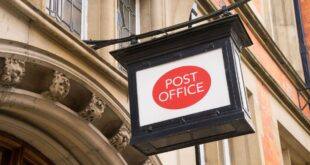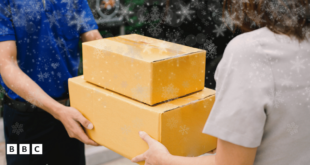The Queen’s committal service at St George’s Chapel in Windsor Castle will feature traditions symbolising the end of Elizabeth II’s reign.
A congregation of 800 people including the King, the royal family, realm prime ministers, governors-general and mourners from the Queen’s household past and present, including personal staff from across her private estates, will gather in the Gothic church on Monday.
The service will take place at 4pm, hours after the state funeral at Westminster Abbey.

The Queen’s coffin will be driven from London to Windsor in the state hearse and make its way up the Long Walk, which will be lined with members of the armed forces.
The King and other royals will join the procession on foot behind the hearse in the castle’s quadrangle, with the Queen Consort, the Princess of Wales, the Duchess of Sussex and the Countess of Wessex following by car.
Prince George and Princess Charlotte will be at the service after attending the state funeral at Westminster Abbey.
During the service, which will be conducted by Dean of Windsor David Conner, the Imperial State Crown, the orb and the sceptre will be lifted from the Queen’s coffin by the Crown Jeweller, separating the Queen from her crown for the final time.
With the help of the Bargemaster and a Serjeant of Arms, the Crown Jewels will be passed to the dean who will place them on the High Altar.
At the end of the last hymn, the King will step forward and place the Grenadier Guards’ Queen’s Company Camp Colour – a smaller version of the Royal Standard of the Regiment – on the coffin.
The Grenadier Guards are the most senior of the Foot Guards regiments and the Queen was their Colonel in Chief.

Only one Royal Standard of the Regiment is presented during a monarch’s reign, and it served as the Queen’s Company Colour throughout her lifetime.
At the same time, former MI5 spy chief Baron Parker – the Lord Chamberlain and the most senior official in the late Queen’s royal household – will “break” his Wand of Office and place it on the coffin.
The ceremonial breaking of the white staff signifies the end of his service to the Queen as sovereign.
As the coffin is lowered into the royal vault, the dean will say a psalm and the commendation before the Garter King of Arms pronounces the many styles and titles of the Queen.
The Sovereign’s Piper will play a lament from the doorway between the chapel and the Dean’s Cloister and walk slowly away so the music gradually fades.
The Archbishop of Canterbury will pronounce the blessing, and God Save The King will be sung.

The King and members of the royal family will leave through the Galilee Porch, but will return for a private burial service in the evening, when the Queen will be interred alongside her late husband the Duke of Edinburgh in the King George VI Memorial Chapel in St George’s.
A committal service is perhaps the most solemn moment of a Church of England funeral service, and it usually takes place at the graveside, in a crematorium chapel or in the church before a burial or cremation.
The majority of those attending St George’s Chapel will not have been at the funeral service in Westminster Abbey.
Many of the household and private estate staff spent years working for and supporting the late monarch, with the committal service a chance to pay their last respects.
Prayers will be said by the Rector of Sandringham, the Minister of Crathie Kirk, the Chaplain of Windsor Great Park, and the Dean of Windsor.
The state hearse will approach the castle through Shaw Farm Gate on Windsor’s Albert Road, moving via the Long Walk, Cambridge Gate, Cambridge Drive, George IV Gate, Quadrangle (south and west sides), Engine Court, Norman Arch, Chapel Hill, Parade Ground and Horseshoe Cloister Arch.

Leading the procession and walking ahead of the coffin will be a dismounted detachment of the Household Cavalry Regiment, followed by a mounted division of the Sovereign’s Escort, a Massed Pipes and Drums of Scottish and Irish Regiments, the Bands of the Coldstream Guards and the Household Cavalry, officers of the Household Division, the Kings, Heralds and Pursuivants of Arms and members of the Queen’s personal staff.
In the centre of the procession, the hearse will be flanked by the pall bearers and an escort party consisting of two officers and 24 rank-and-file of the 1st Battalion Grenadier Guards.
The Queen’s Company Colour, the Royal Standard of the Regiment of Grenadier Guards, and a Sovereign’s Standard of the Household Cavalry will be positioned in the front and rear of the hearse.
To the rear of the coffin will be members of the Queen’s, the King’s and the Prince of Wales’s households, followed by further mounted and dismounted detachments of the Household Cavalry.
Minute Guns will be fired by The King’s Troop, Royal Horse Artillery from a position on the East Lawn as the coffin moves in procession from Shaw Farm Gate to the West Steps of St George’s.
The Sebastopol Bell – captured in Crimea in 1856 – and the Curfew Tower Bell will be tolled concurrently at the castle.



